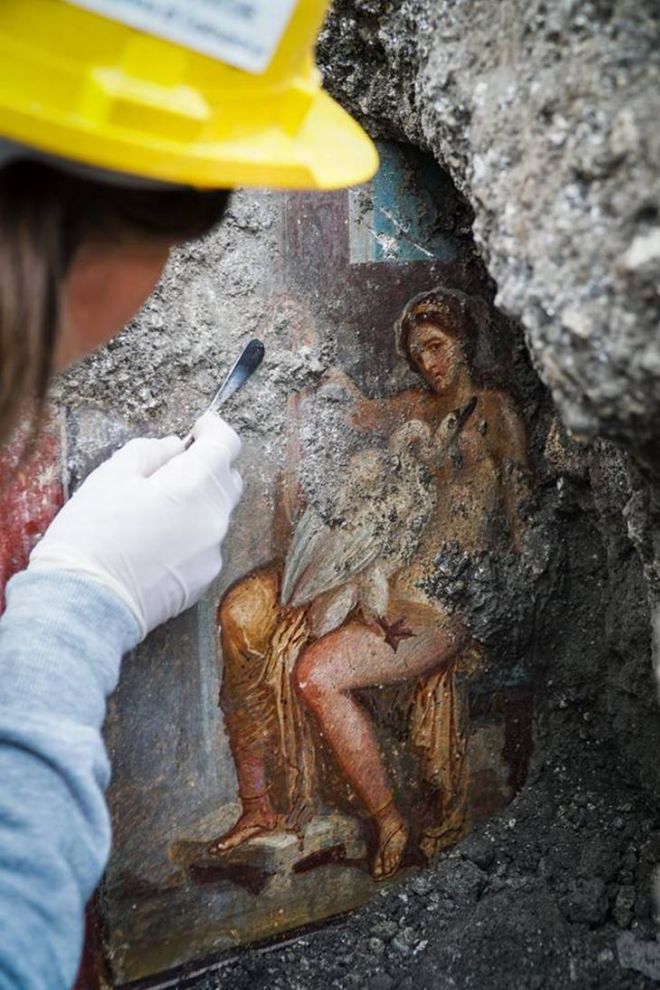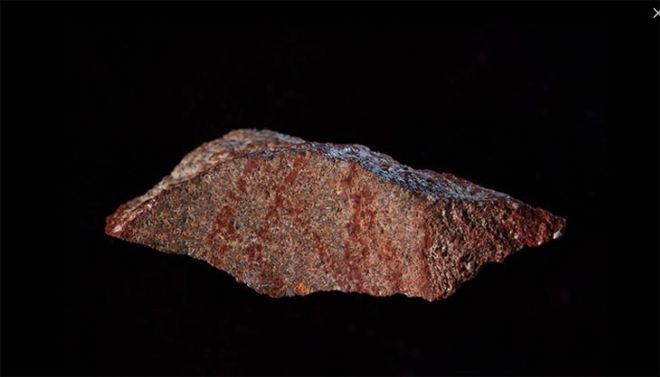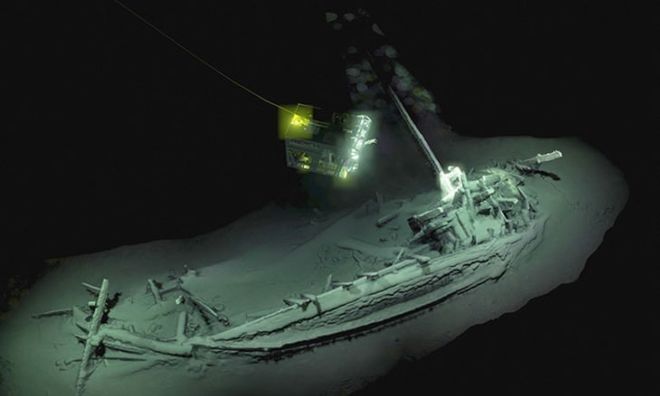Location of the expedition: Italy
Date of the findings: 600 BCE
The tragic volcano eruption in Pompeii continues teaching historians about Roman antique culture and everyday life in astonishing detail.
Though most of the city was uncovered years ago, one of the segments was left untouched until 2018. Archeologists had to work fast, as the dirt and ashes from this unexplored area were threatening the integrity of the already-discovered parts that are open to tourists.

efe, parco archeologico
The hard work definitely paid off, as the archeologists found a house with an enormous lararium, a room present in many Roman houses dedicated to the guardian deities (Lares).
Inside the room, they found several frescoes of animals and golden snakes, which proved the speculation that the lararium was the most beautiful and important place in any Roman home.
8. The Oldest Drawing in the History of Humanity
Location of the expedition: South Africa
Age of the findings: 73,000 years
One of the most notable discoveries of the year was the oldest drawing, which was found in the Blombos cave near Cape Town and believed to be 73,000 years old. It predates other early drawings by at least 30,000 years.
The drawing was made using a red ocher crayon, one of the first painting mediums in human history. Apart from the drawing, the cave also contained bone tools, teeth, beads made of seashells and engravings.

nytimes
At this point, it is unknown if the drawing had a specific purpose, but several scientists speculate that it might have a symbolic purpose or may even be an unknown writing system.
9. The Oldest Shipwreck Found at the Bottom of the Black Sea
Location of the expedition: the Black Sea, near the coast of Bulgaria
Age of the findings: 2,400 years
A 2,400-year-old Greek merchant ship was discovered more than a mile under the surface of the Black Seas near the coast of Bulgaria. This is the oldest known shipwreck and the researchers pointed out that it is in remarkable condition thanks to the oxygen-deprived atmosphere at the bottom of the Black Sea.
This finding may change our understanding of shipbuilding in the ancient world. Apart from the Greek ship, the research team found over 70 other shipwrecks: Roman trading vessels with intact wares, several 17-century Cossack battleships, as well as a completely-intact classical-period ship.

theguardian/ Black Sea Map
10. The Puzzling Story of a Sewage-Filled Sarcophagus
Location of the expedition: Egypt
Date of the findings: 332 BCE
This scandalous finding is more about the drama surrounding it than the discovery itself. It is true that we are talking about the largest sarcophagus found in Alexandria (it contained 3 corpses, one of a 20-25-year-old woman and two men in their 30s or 40s).
However, the story became so popular in the media because the sarcophagus was filled with mysterious red ooze. Archeologists soon established that the disgusting-looking liquid was nothing else but sewage water that seeped into the granite sarcophagus, but some people believed otherwise.
Over 17,000 citizens claimed that the ooze had some magical healing powers and wanted to drink it, which immediately caught the media’s attention. In the end, the sarcophagus was moved to Alexandria National Museum, and thankfully, no sewage-drinking ever happened.

livescience